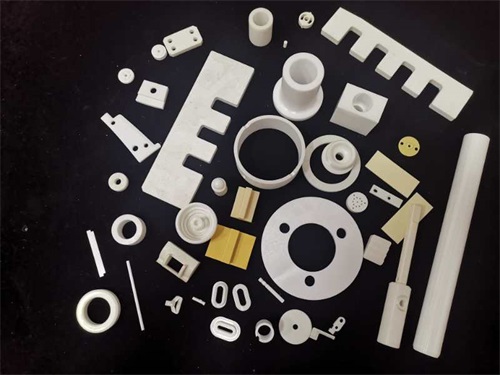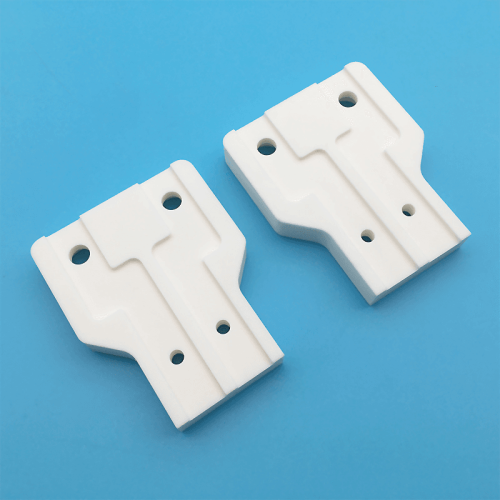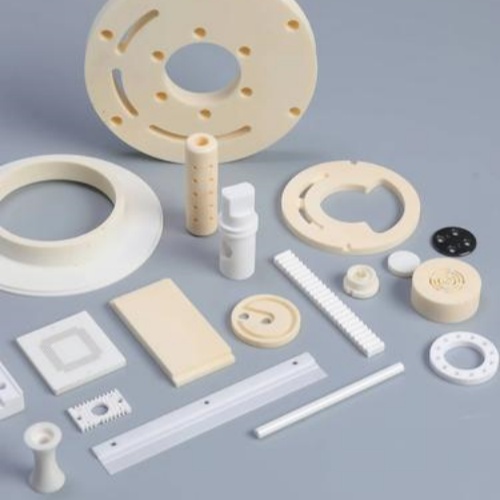What are the applications of aluminum nitride ceramics and silicon carbide ceramics in solar photovoltaics
With the acceleration of global energy transition, the solar photovoltaic industry, as an important component of clean energy, is rapidly developing. In this process, the application of high-performance materials is crucial for improving the efficiency and reliability of photovoltaic systems. Aluminum nitride (AlN) ceramics and silicon carbide (SiC) ceramics, as two high-performance materials, have shown broad application prospects in the field of solar photovoltaics due to their unique physical and chemical properties.

Application of Aluminum Nitride Ceramics in Solar Photovoltaics
(1) Thermal management
Aluminum nitride ceramics have become an ideal material for heat dissipation management of photovoltaic modules due to their high thermal conductivity (theoretical thermal conductivity up to 320 W/(m · K), which can reach over 150 W/(m · K) in practical applications) and excellent electrical insulation properties. In photovoltaic modules, aluminum nitride ceramic heat sinks can effectively reduce the operating temperature of the module, thereby improving the photoelectric conversion efficiency. For example, in high-power density photovoltaic systems, aluminum nitride ceramic heat sinks can quickly conduct and dissipate heat, reducing efficiency degradation caused by high temperatures.
(2) Packaging material
Aluminum nitride ceramics can also be used for packaging photovoltaic modules. Its high hardness, wear resistance, and good chemical stability enable it to effectively protect photovoltaic modules from external environmental erosion and extend the service life of the modules. In addition, the high thermal conductivity of aluminum nitride ceramics also helps to quickly dissipate heat within the encapsulation layer, further enhancing the performance of photovoltaic modules.
(3) Battery manufacturing
Aluminum nitride ceramics can be used as electrode materials and passivation layers in the manufacturing process of solar cells. As an electrode material, the high conductivity and stability of aluminum nitride ceramics can improve the photoelectric conversion efficiency of batteries. As a passivation layer, aluminum nitride ceramics can effectively reduce the composite loss on the surface of solar cells, improve the open circuit voltage and short-circuit current of the cells.

Application of silicon carbide ceramics in solar photovoltaics
(1) Battery cell production vehicle
Silicon carbide ceramics play a crucial role in the production process of photovoltaic cells. Compared with traditional quartz materials, silicon carbide ceramics have better thermal stability, higher strength, and longer service life. Vehicles such as boat supports, boat boxes, and pipe fittings made of silicon carbide ceramics can maintain stability in high temperature environments, without releasing harmful substances, and have a service life of over 1 year, significantly reducing production costs.
(2) Solar thermal power generation system
Silicon carbide ceramics are ideal heat absorbing materials in tower solar thermal power generation systems. This system is highly praised for its high concentration ratio, high thermal cycle temperature, and low thermal loss. The heat absorber made of silicon carbide ceramics can work at high temperatures exceeding 1000 ℃ and withstand high radiation intensity equivalent to 200-300 times the natural light intensity. Its high strength, large specific surface area, corrosion resistance, oxidation resistance, and good thermal insulation make it an ideal choice for solar thermal power generation systems.
(3) Photovoltaic inverter
Silicon carbide ceramics can also be used as heat dissipation and housing materials for photovoltaic inverters. Its excellent high temperature resistance, moisture resistance, and corrosion resistance enable it to maintain stable operation in harsh environments. Silicon carbide ceramic radiators can effectively reduce the operating temperature of inverters, improve the reliability and service life of the system.

Aluminum nitride ceramics and silicon carbide ceramics each have unique advantages in the field of solar photovoltaics. Aluminum nitride ceramics have become an ideal material for heat dissipation and packaging of photovoltaic modules due to their high thermal conductivity and excellent electrical insulation properties; Silicon carbide ceramics have shown broad application prospects in high-temperature components and thermal power generation systems due to their high temperature resistance, corrosion resistance, and high strength characteristics.
PREVIOUS:Comparison of Properties between Aluminum Nitride Ceramics and Silicon Carbide Ceramics
NEXT:The potential application of aluminum nitride ceramics in the solar photovoltaic industry
CATEGORIES
LATEST NEWS
- What are the applications o...
- What are the uses of silico...
- What are the uses of zircon...
- What are the advantages and...
- What are the advantages of ...
- What are the difficulties i...
- What are the advantages of ...
- The manufacturing method of...
- Application scope of zircon...
- What are the difficulties i...
